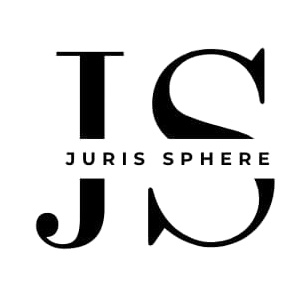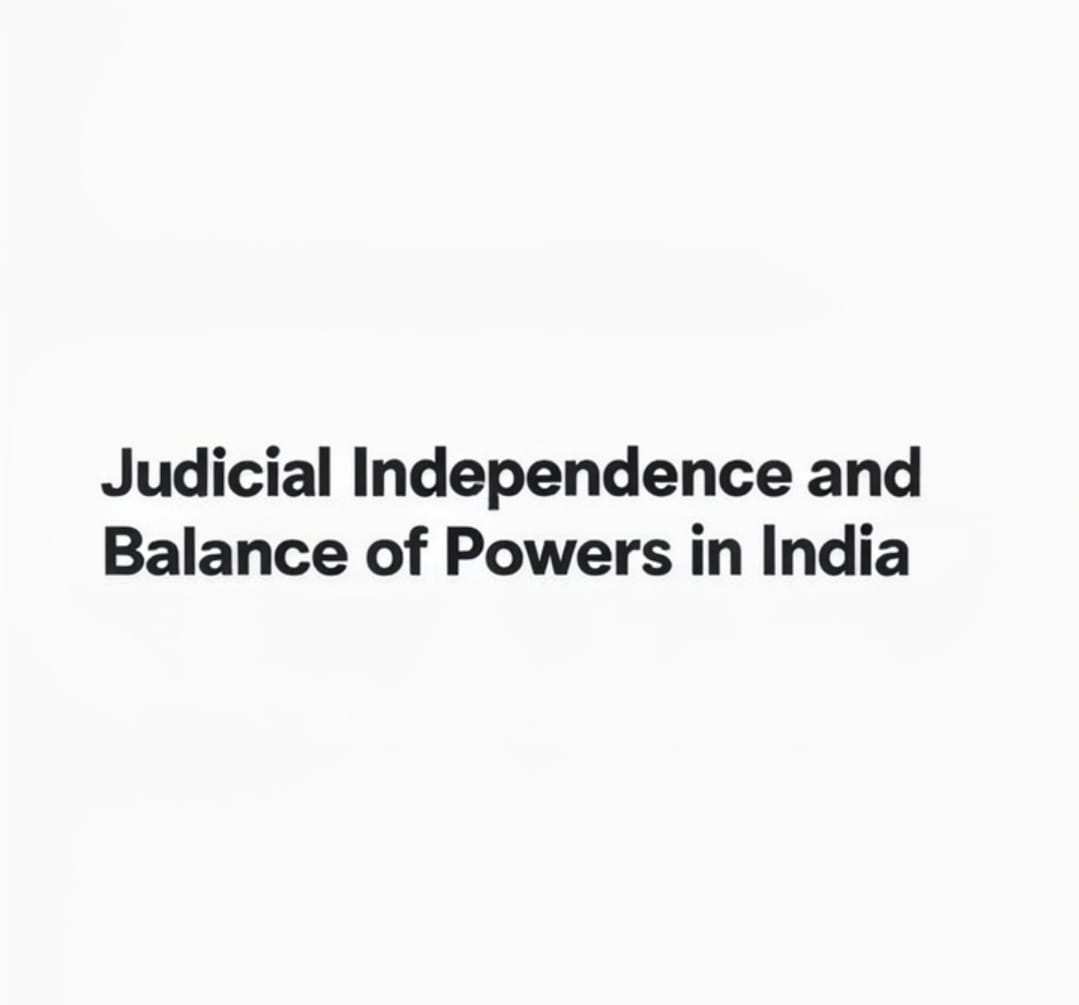INTRODUCTION
When India achieved independence in 1947, it was not only a release from colonial domination, it was the beginning of a constitutional process which would have liberty, justice, and democratic governance as its bases for the Republic. In this process, an independent judiciary was central to protect the Constitution from foreign and domestic incursions. In India, judicial independence is not just about liable checks and balances, it is about protecting the sovereignty, liberty, and dignity of a self-governing people. In the seventy years since independence courts have stood in the breach against tyrants and have preserved the democratic values that defines the identity of India.
THE JUDICIARY: INDIA’S SECOND FREEDOM STRUGGLE
India gained political independence from foreign rule in 1947. However, true independence (freedom from oppression, inequality, and irresponsible authority) requires a truly independent judiciary. If the Constitution is the soul of India, then the judiciary is its backbone. Without the judiciary, the democratic body withers away.
Where the Parliament represents the voice of the people, the judiciary represents the people’s shield against the government. In that respect, an independent judiciary embodies independence by translating it to the quotidian, protecting individuals from injustice, and a nation from autocracy.
Each time the court turns aside an unconstitutional law or upholds a citizen’s right to speak, worship, or dissent, the court is not only upholding s legality, but also India’s hard-earned Independence.
CONSTITUTIONAL FOUNDATIONS OF JUDICIAL INDEPENDENCE
The Constitution of India establishes the separation of powers propounded by Montesquieu in his book “The Spirit of Laws” in 1748. It includes a tripartite separation of powers among the legislature, executive and judiciary. Articles 32 and 226 of the Indian Constitutions empower the Supreme court and the High Courts to enforce fundamental rights through Writ Jurisdiction[i]. Article 50 explicitly mandates the separation of Judiciary from the Executive in public services[ii].
THE BASIC STRUCTURE DOCTRINE AS A GUARDIAN OF JUDICIAL INDEPENDENCE
The Kesavananda Bharati case highlighted the judicial independence by identifying it as the “Basic Structure” of the Constitution and cannot be abrogated by the Parliament through Constitutional Amendments[iii].
The Security of Tenure is protected under Article 124, which ensures that the Supreme Court judges can only be removed through impeachment which includes complex parliamentary process[iv]. The salaries and services of both the Supreme Court and High court judges are shielded from executive interference through Articles 125 and 221 respectively[v].
EVOLUTION OF JUDICIAL APPOINTMENTS AND THE COLLEGIUM SYSTEM
Historically, the executive dominated the judicial appointments in our country. But later, the “Three Judges Cases” reinterpreted the Article 124 to establish a collegium system, whereas the Senior Most Judges hold primacy in appointing the members of higher judiciary[vi]
In Supreme Court Advocates-on-Record Association v. Union of India (1993), the Supreme Court held that the word “consultation” in Article 124(2) effectively meant “concurrence” of the judiciary in appointments[vii]. The judicial primacy was reaffirmed in 1998 and has since become the basis for appointments of judges of higher judiciary.
Although the Collegium System has intended to prevent executive interference, it was criticised for lacking transparency and accountability. Attempts were made to reform this via the National Judicial Appointments Commission (NJAC), a body which contains judicial, executive and civil society representation. But it was also structed down in Supreme Court Advocates-on-Record Association v. Union of India (2015) mentioning it as violation of the “Basic Structure Doctrine”[viii].
CONTEMPORARY CHALLENGES
A. Transfers and Lack of Transparency
The Transfer of Judges under Article 222 without clear justification is viewed as a tool of indirect control. Such transfers, as seen in the case of Justice S. Muralidhar, who was transferred shortly after criticizing police inaction during the Delhi riots, triggered the concerns of retribution[ix].
B. Post-Retirement Appointments
Appointments of retired judges in executive machineries such as tribunals reduces the public confidence in judicial impartiality. Even though not unconstitutional, they raise ethical red flags. Chief Justice D.Y. Chandrachud has called for a “cooling-off” period to address this perception[x].
C. JUDICIAL BACKLOGS AND UNDERSTAFFING
In the Supreme Court there are already over 80,000 pending cases; there are over 5,600 vacant judicial posts in subordinate courts across India. Delay undermines the rule of law, creates space for informal pressures, and undermines independence in practice[xi].
D. ALLEGATIONS OF CORRUPTION AND ETHICAL MISCONDUCT
Recent controversies, including the Justice Yashwant Varma cash row, illustrates a systemic failure regarding judicial accountability. The absence of binding disciplinary actions and the lack of public transparency has fueled public mistrust. Internal “in-house” procedures are opaque and lack statutory authority[xii].
THE ROLE OF THE JUDICIARY IN MAINTAINING DEMOCRACY
A. JUDICIAL REVIEW OF LEGISLATIVE AND EXECUTIVE ACTIONS
Judicial independence enables courts to enact responsibilities non-arbitrarily as constitutional watchdogs. In Indira Nehru Gandhi v. Raj Narain, the Supreme Court struck down a constitutional amendment which sought to protect the Prime Minister’s election from judicial scrutiny[xiii].
In S.R. Bommai v. Union of India, the Court struck down the arbitrary exercise of Article 356, ruling that presidential rule is subject to parliamentary and judicial review, protecting federalism from the arbitrary interference of the national government[xiv].
B. Protection of Fundamental Rights
Through Public Interest Litigations (PILs), Indian courts have extended the fundamental rights into socio-economic realms, for example right to education, health, and a clean environment were implicitly included under Article 21 of the Constitution. These advances were made possible by an independent judiciary willing to confront deep-rooted power structures[xv].
HOW AN INDEPENDENT JUDICIARY SUSTAINS THE SOVEREIGNTY, STABILITY, AND SPIRIT OF THE INDIAN REPUBLIC
Independent judiciary ensures that no branch of government exceeds its authority. By upholding the Constitution, it strikes down unjust laws and protects the right of the citizens. It guards India’s Sovereignty form internal abuse of power[xvi]. It promotes stability by resolving disputes impartially, maintaining public trust and enforcing the rule of law[xvii]. It also prevents the spirit of Republic (Justice, liberty and equality) by holding power accountable and democratic values under pressure[xviii].
CONCLUSION
As India develops as an increasingly important regional and global presence, the health of its democracy may rest not solely on elections, and legislatures. It may also depend on a judiciary that is fearless, fair, and independent. When the judiciary protects the Constitution, it protects India’s independence itself—by making sure that no branch, no individual, nor, any force can overwhelm the will of the people or, the rule of law. Judicial independence is not a luxury; it is essential for a truly free nation.
AUTHOR’s information
Moveeka K, a Law Student at Government Law College, Coimbatore (an affiliated college under Tamil Nadu Dr. Ambedkar Law University, Chennai), is a Certified Legal Researcher from Manupatra and a Certified Legal Assistant holding an NSDC Skill India Certificate. An aspiring legal writer with keen interests in Company Law, Corporate Law, Banking (Finance) Law, Constitutional Law and any aspect of Intellectual Property Law. Enjoys researching and writing on emerging ways of legal writing on contemporary legal issues.
References
[i] INDIA CONST. arts. 32, 226.
[ii] Id. art. 50
[iii] Kesavananda Bharati v. State of Kerala, (1973) 4 SCC 225.
[iv] INDIA CONST. art. 124.
[v] Id. arts. 125, 221
[vi] S.P. Gupta v. Union of India, 1981 Supp SCC 87; Supreme Court Advocates-on-Record Ass’n v. Union of India, (1993) 4 SCC 441; In re Special Reference No. 1 of 1998, (1998) 7 SCC 739.
[vii] Supreme Court Advocates-on-Record Ass’n v. Union of India, (1993) 4 SCC 441.
[viii] Supreme Court Advocates-on-Record Ass’n v. Union of India, (2015) 6 SCC 408
[ix] Press Trust of India, Delhi HC Judge Muralidhar Transferred After Criticizing Police, THE INDIAN EXPRESS (Feb. 27, 2020), (Aug 18, 2025, 4:06 PM), https://indianexpress.com/article/india/justice-muralidhar-transferred-to-punjab-haryana-hc-6288512/.
[x] Dhananjay Mahapatra, CJI Advocates Cooling-Off Period for Retired Judges, TIMES OF INDIA (Mar. 14, 2025), (Aug 18, 2025, 4:06 PM), https://timesofindia.indiatimes.com/toireporter/author-Dhananjay-Mahapatra-18127.cms.
[xi] National Judicial Data Grid, (Aug 18, 2025, 4:06 PM), https://njdg.ecourts.gov.in.
[xii] Editorial, Judiciary in Crisis: The Yashwant Varma Affair, INDIAN EXPRESS (Jan. 12, 2025), (Aug 18, 2025, 4:06 PM). https://indianexpress.com/article/opinion/editorials/express-view-on-justice-yashwant-varma-case-an-open-justice-9902216/
[xiii] Indira Nehru Gandhi v. Raj Narain, (1975) Supp SCC 1.
[xiv] S.R. Bommai v. Union of India, (1994) 3 SCC 1
[xv] Shylashri Shankar, Scaling Justice: India’s Public Interest Litigation Movement, 15 HARV. HUM. RTS. J. 117 (2002), (Aug 18, 2025, 4:06 PM), https://dokumen.pub/scaling-justice-indias-supreme-court-anti-terror-laws-social-rights-and-civil-liberties-9780195693201-0195693205.html.
[xvi] Kesavananda Bharati v. State of Kerala, (1973) 4 S.C.C. 225 (India).
[xvii] INDIA CONST. arts. 32, 226.
[xviii] S.R. Bommai v. Union of India, (1994) 3 S.C.C. 1 (India); Indira Nehru Gandhi v. Raj Narain, (1975) Supp. S.C.C. 1 (India).

